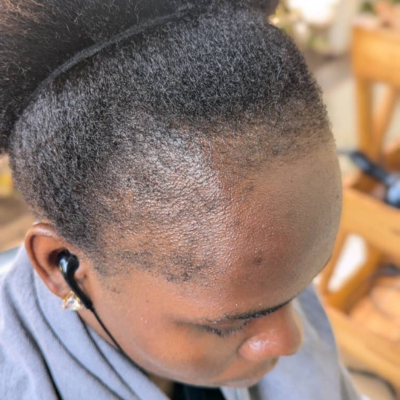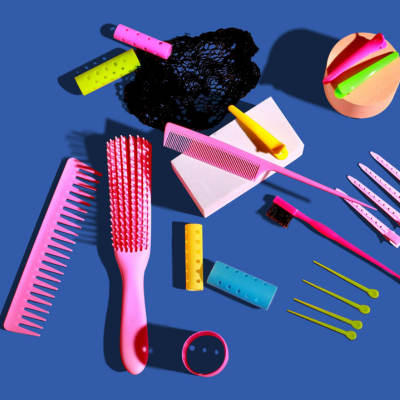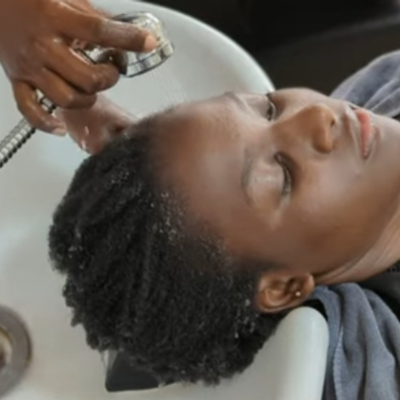- Support 24/7
- +1 (480) 468-4543
- livara@mylivara.com
Moisture: Unveiling the Secrets to Healthy, Happy Hair

Thinning Edges Are Not Normal: What You Need To Know About Traction Alopecia
July 18, 2024
Models Rock African Braids on the Dior Runway | WATCH
July 21, 2024
Let’s face it, hair isn’t always a picture of effortless perfection. Just like our skin craves consistent hydration to maintain its youthful glow, our hair too, can suffer from dryness, a condition that can leave it brittle, dull, and prone to breakage. This dryness isn’t some random occurrence — it’s our hair’s way of crying out for help! Learning to listen to these cries and address the underlying issues is key to unlocking the secrets of healthy, radiant hair.
Think of moisture as the lifeblood of your hair. It plumps up the hair shaft, making it strong and resilient. But most importantly, it allows your hair to grow unhindered. While hair has a natural growth cycle (around half an inch per month, translating to a potential six inches a year!), dryness can create the illusion of stunted growth. When hair breaks at the same rate it grows, it certainly appears like it’s not growing at all. This is where prioritizing moisture becomes crucial. Moisture acts like a natural plasticizer within the hair shaft. It allows your hair to stretch and bounce back without snapping. This translates to better manageability, making it easier to style your hair without causing damage. Dry hair, on the other hand, loses its elasticity, becoming brittle and prone to breakage when combed or styled.
This article dives deep into the fascinating world of hair hydration, equipping you with the knowledge to understand your hair’s needs and unlock its full potential. We’ll debunk the myth of hair oils as the ultimate solution (they’re more like moisture sealants, not moisture providers!), explore the science of moisture balance, and provide practical tips on how to effectively hydrate your hair, focusing specifically on those beautiful, intricate curls and coils.
The Science of Hair Hydration: More Than Just Water
Moisture is undeniably essential for hair health. As discussed earlier, it helps maintain the elasticity of the hair shaft and keeps it plump and manageable. However, understanding hair porosity is key to unlocking the secrets of true hydration. Porosity refers to the hair’s ability to absorb and retain moisture. Imagine your hair as a sponge – low porosity hair has a tight “seal,” making it difficult for water to enter but also preventing it from escaping easily. High porosity hair, on the other hand, absorbs water readily, but struggles to retain it. This is why a one-size-fits-all approach to hair care won’t work. Understanding your hair’s porosity will guide you in choosing the most effective moisturizing techniques.
Here’s how to identify yours and what it means for your hair’s moisture journey:
The DIY Porosity Test:
Ready to unlock the secret of your hair’s porosity? Grab a clean strand of hair (washed without conditioner) and a glass of water.
Float Test: Gently drop the strand of hair into the glass.
- Low Porosity: If your hair floats for a long time (several minutes), you likely have low porosity hair.
- High Porosity: If your hair sinks immediately, you likely have high porosity hair.
- Medium Porosity: If your hair sinks slowly or sits in the middle of the glass, you likely have medium porosity hair.
While easy to carry out, the “float test” for hair porosity isn’t always reliable. Hair products, styling residue, hair type (coarse vs. fine), and even damage can all affect how quickly a strand sinks, making it difficult to get an accurate read on your hair’s true ability to absorb and retain moisture. For a more accurate picture, test how your hair actually reacts to water:
The “How Your Hair Reacts to Water” Test:
This test focuses on how your hair absorbs and retains moisture. Here’s what to observe:
- Spray a small section of clean, dry hair with water:
- Low porosity: Water beads up and takes a long time to absorb.
- High porosity: Water absorbs instantly.
- Medium porosity: Water absorbs within a few seconds.
Understanding Your Porosity:
Low Porosity: This hair type has a tightly sealed cuticle, making it difficult for water to penetrate. The good news is that moisture stays locked in for a long time. The downside? It can take longer for products to penetrate the hair shaft.
High Porosity: This hair type has a more open cuticle, allowing for rapid water absorption. However, this also means moisture evaporates quickly, leaving your hair dry and thirsty.
Medium Porosity: This hair type strikes a beautiful balance. It absorbs moisture readily and retains it well. This makes it the most versatile hair type in terms of product choice.
Porosity and Moisture Management:
Knowing your hair’s porosity will help you choose the right products and techniques to keep your hair hydrated and healthy. Here’s a quick guide:
Low Porosity:
- Focus on lightweight products: Opt for water-based styling products like moisturizing sprays and leave-in hair conditioners for all-day moisture.
- Incorporate gentle heat: When deep conditioning, enhance penetration by covering your hair with a plastic cap to generate heat, or sit under a hooded dryer. Additionally, use warm water to open the hair cuticle slightly and allow for better product penetration.
- Steam treatments: Occasional steam treatments can further open the cuticle and allow for deeper conditioning.
High Porosity:
- Deep conditioning treatments: These are your best friend! Use them regularly to replenish lost moisture.
- Sealing oils: Look for products rich in shea butter or coconut oil to seal in moisture after deep conditioning.
- Minimize heat styling: Heat can exacerbate dryness in high porosity hair.
Medium Porosity:
- You have the most flexibility! Experiment with different products and techniques to find what works best for your hair. Just make sure you’re incorporating adequate moisture through moisturizing sprays, conditioners, and other moisturizers, and sealing in the moisture with a natural hair oil or butter like the avocado oil and shea butter infused-Emerald Hair Food.
Remember: Porosity is not a fixed state. Chemical treatments, aging, and even environmental factors can affect your hair’s porosity over time. Be observant and adjust your routine accordingly to keep your beautiful locks healthy and hydrated!
The Dry Spell: Recognizing the Signs of Dry Hair
Dryness often whispers its arrival before it shouts from the rooftops. Here’s how to detect the early warning signs:
- Texture: Does your hair feel rough and dry to the touch?
- Frizz: Does even the slightest hint of humidity transform your hair into a halo of frizz?
- Shine: Does your hair lack that healthy, glossy sheen, appearing dull?
- Breakage: Do you notice an increase in split ends and breakage, especially when combing or styling your hair?
- Elasticity: When you stretch a damp strand of hair, does it snap easily instead of bouncing back with a healthy stretch?
These signs are your hair’s way of sending an SOS. Ignoring them can lead to more severe damage, making it crucial to address them early on.
Unveiling the True Heroes of Hair Moisturization
Now that you understand the science behind hair moisturization, let’s explore the powerhouses that can truly help you achieve moisturized, healthy hair. Remember, while hair oils are fantastic for sealing in moisture, they aren’t the primary source of hydration. Here are the real deal MVPs:
- Humectants: These are the moisture magnets of the hair care world. They attract and hold onto water molecules, keeping your hair hydrated and supple. Examples include glycerin, aloe vera, and honey.
- Emollients: Think of emollients as the smoothers. They coat the hair shaft, locking in moisture and preventing it from escaping. Shea butter, cocoa butter, and avocado oil are excellent emollients.
- Leave-in Conditioners: These lightweight products are fantastic for daily use. They provide a constant source of moisture and help detangle strands while keeping frizz at bay.
- Deep Conditioning Treatments: These are your hair’s biggest ally. Used regularly (every 1-2 weeks), they provide a deep dose of hydration and repair to dry, damaged strands.
Tailoring Your Routine: Strategies for Curly and Coily Hair
Now, let’s get specific! Curly and coily hair thrives on moisture. Their tight coils and raised cuticles create a larger surface area for both water absorption and evaporation. Here’s how to pamper your curls:
- The LOC Method: This layering technique (Liquid, Oil, Cream) delivers a powerful dose of moisture. Start with a leave-in conditioner or water-based product to deliver hydration. Follow with a lightweight oil (like jojoba or argan) to seal in moisture. Finish with a styling cream to define your curls and prevent frizz.
- Minimise Heat Styling: Heat is a major culprit when it comes to moisture loss. Embrace your natural texture as much as possible, and if you do use heat styling tools, always apply a heat protectant spray or cream beforehand.
- Satin or Silk Bonnets and Pillowcases: Cotton pillowcases can absorb moisture from your hair while you sleep. Wear a satin or silk bonnet when you go to sleep or opt for silk pillowcases to minimize friction and retain moisture as you sleep.
- Clarifying Shampoo: Product buildup can prevent proper moisture absorption. Use a clarifying shampoo like the Tsavorite Clarifying Treatment Hair Shampoo once a month to remove buildup and allow for deeper conditioning.
Remember: Consistency is key! Developing a regular hair care routine that addresses your hair’s specific needs is important for achieving and maintaining healthy, hydrated hair. Don’t be afraid to experiment and find what works best for you.
Conclusion
By understanding the science of hair moisture and porosity, you can unlock the secrets to healthy, radiant hair. Listen to your hair’s cries for moisture, tailor your routine accordingly, and embrace the beautiful, unique texture you were born with! Because you are a gem.
We’d love to hear from you! Share your biggest hair moisturization challenges and tips in the comments below. Let’s create a supportive community where we can learn from each other and celebrate the amazing diversity of hair!



